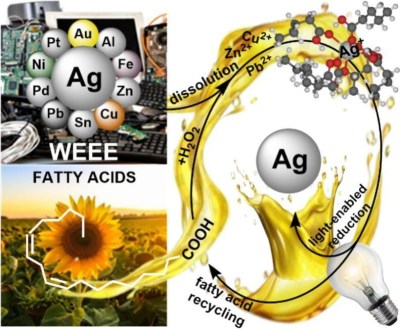Usually when an alchemist shows up promising to turn rocks into gold, you should run the other way. Sure, rocket fuel isn’t gold, but on the moon it’s worth more than its weight in the yellow stuff. So there would be reason to be skeptical if this “Blue Alchemist” was actually an alchemist, and not a chemical reactor under development by the Blue Origin corporation.
The chemistry in question is quite simple, really: take moon dust, which is rich in aluminum silicate minerals, and melt the stuff. Then it’s just a matter of electrolysis to split the elements, collecting the gaseous oxygen for use in your rockets. So: moon dust to air and metals, just add power. Lots and lots of power.
Melting rock takes a lot of temperature, and the molten rock doesn’t electrolyse quite as easily as the water we’re more familiar with splitting. Still, it’s very doable; this is how aluminum is produced on Earth, though notably not from the sorts of minerals you find in moon dust. Given the image accompanying the press release, perhaps on the moon the old expression will be modified to “make oxygen while the sun shines”.
Hackaday wasn’t around to write about it, but forward-looking researchers at NASA, expecting just such a chemical reactor to be developed someday, proposed an Aluminum/Liquid Oxygen slurry monopropellant rocket back in the 1990s.
That’s not likely to be flying any time soon, but of course even with the Methalox rockets in vogue these days, there are appreciable cost savings to leaving your oxygen and home. And we’re not biologists, but maybe Astronauts would like to breathe some of this oxygen stuff? We’ve heard it’s good for your health.


















